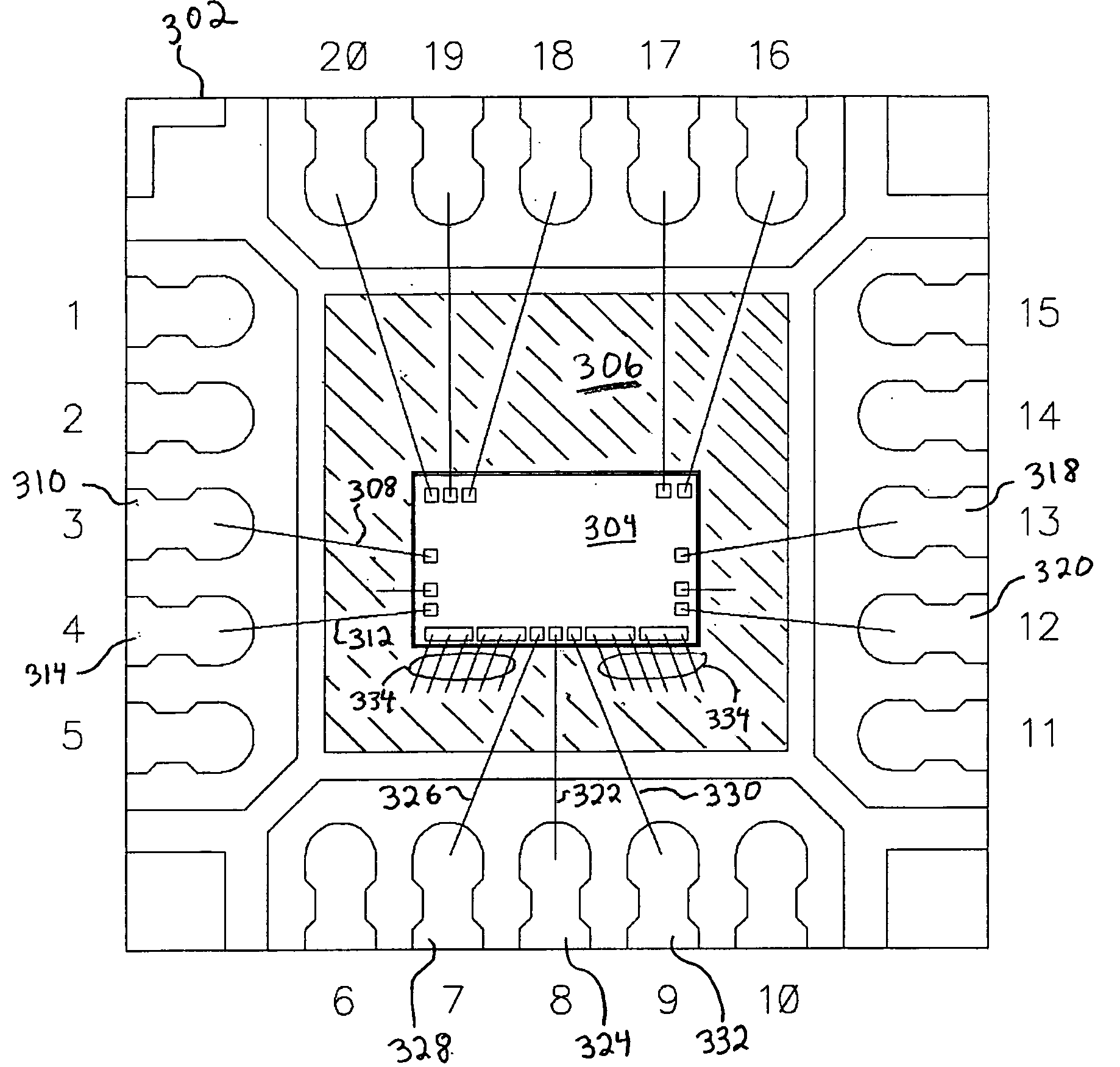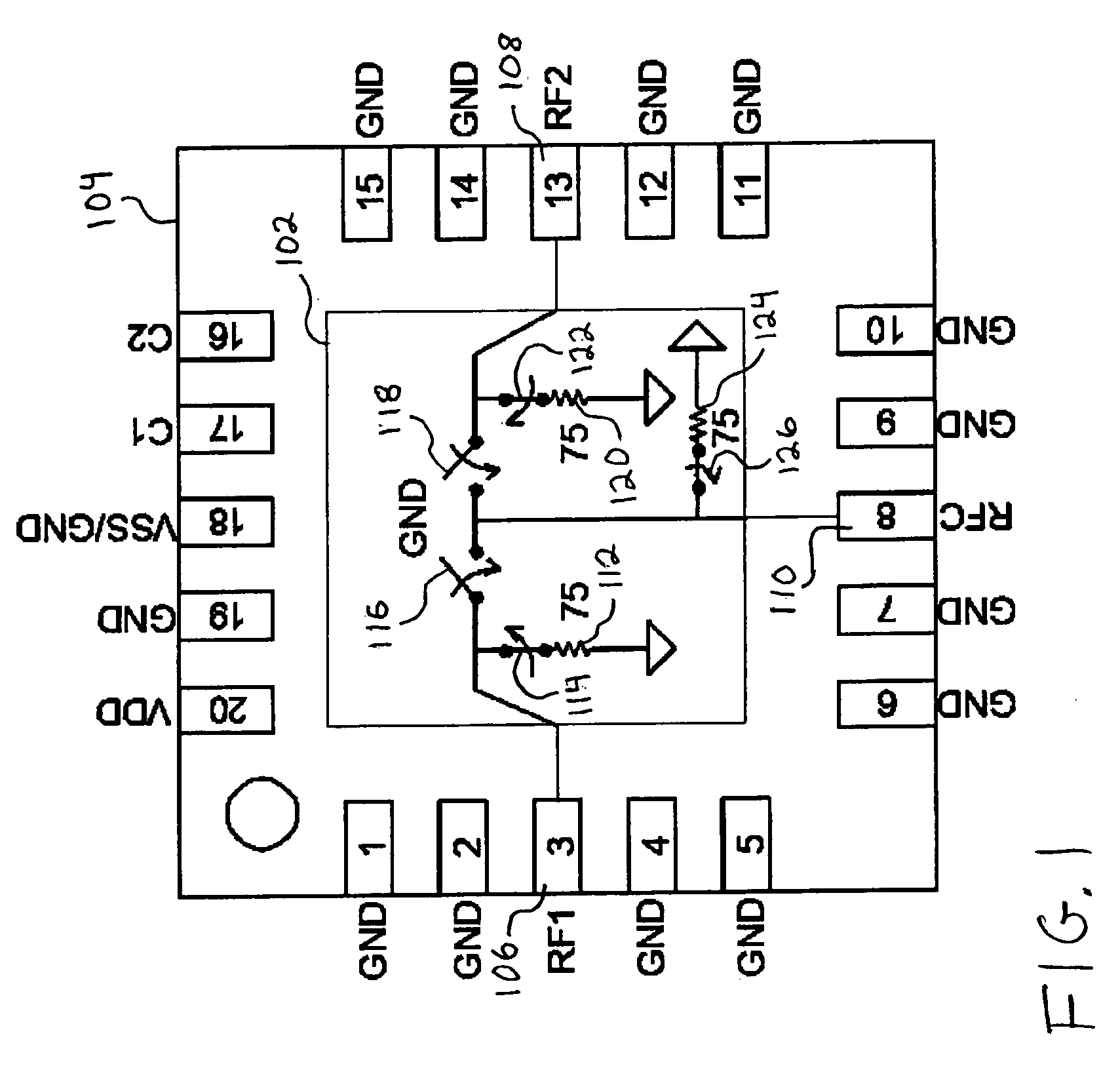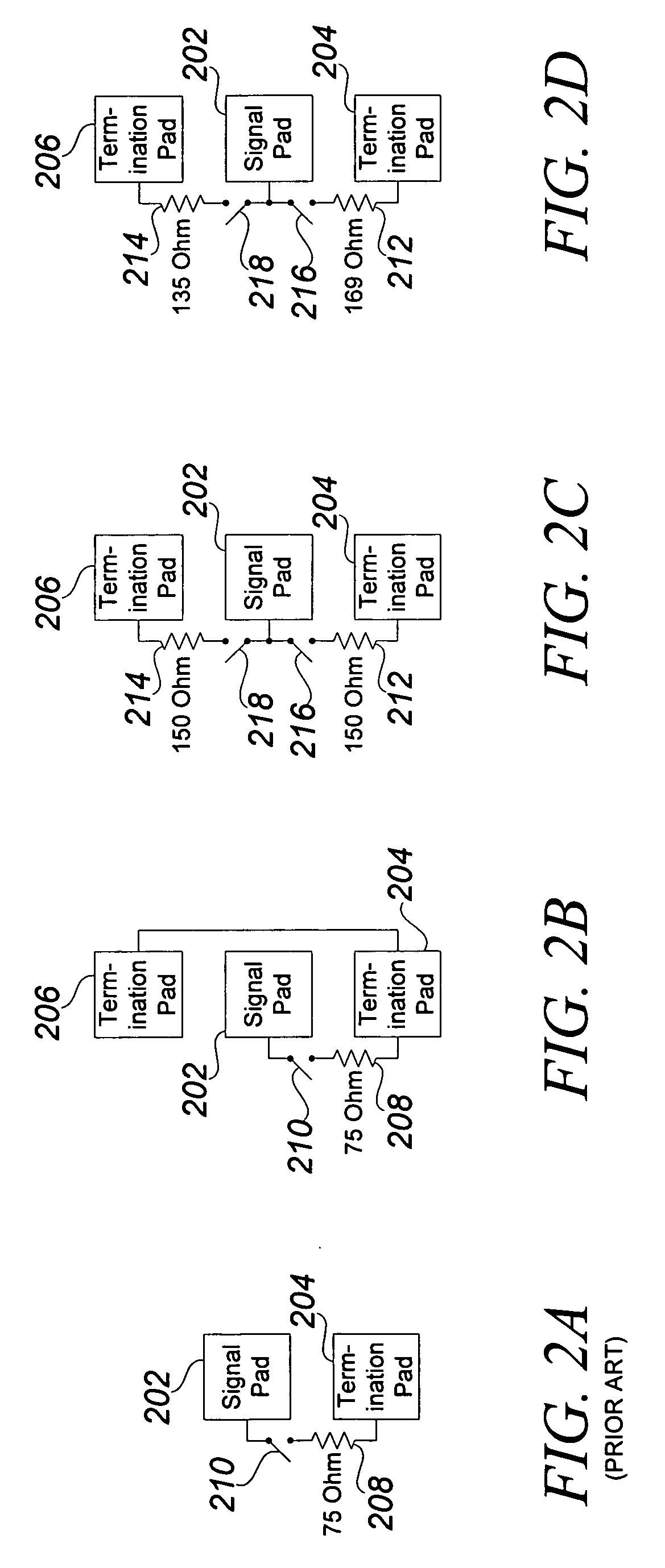Mounting integrated circuit dies for high frequency signal isolation
- Summary
- Abstract
- Description
- Claims
- Application Information
AI Technical Summary
Benefits of technology
Problems solved by technology
Method used
Image
Examples
Embodiment Construction
[0020]FIG. 1 illustrates, in a simplified quasi-schematic manner, signal switching functionality for an exemplary integrated circuit (IC) die 102 that is mounted on an IC package or carrier 104. The carrier 104 includes terminals used for connecting the IC to a circuit in which it is employed. In particular, a first RF signal will be connected to a terminal 106 that is labeled “RF1” and indicated as pin “3.” A second RF signal will be connected to a terminal 108 (RF2, 13). An RF common will be connected to a terminal 110 (RFC, 8).
[0021]Each of the RF signal terminals is connected to the IC die 102, which includes switches to connect the signal to either an RF common, or to a termination path. The first RF signal, for example, is typically coupled to a terminating impedance 112 (here, 75 ohms resistive) via a first signal termination switch 114 when a first signal switch 116 is open (so that the signal is not terminated by another circuit). The second RF signal is shown similarly dis...
PUM
 Login to View More
Login to View More Abstract
Description
Claims
Application Information
 Login to View More
Login to View More - Generate Ideas
- Intellectual Property
- Life Sciences
- Materials
- Tech Scout
- Unparalleled Data Quality
- Higher Quality Content
- 60% Fewer Hallucinations
Browse by: Latest US Patents, China's latest patents, Technical Efficacy Thesaurus, Application Domain, Technology Topic, Popular Technical Reports.
© 2025 PatSnap. All rights reserved.Legal|Privacy policy|Modern Slavery Act Transparency Statement|Sitemap|About US| Contact US: help@patsnap.com



